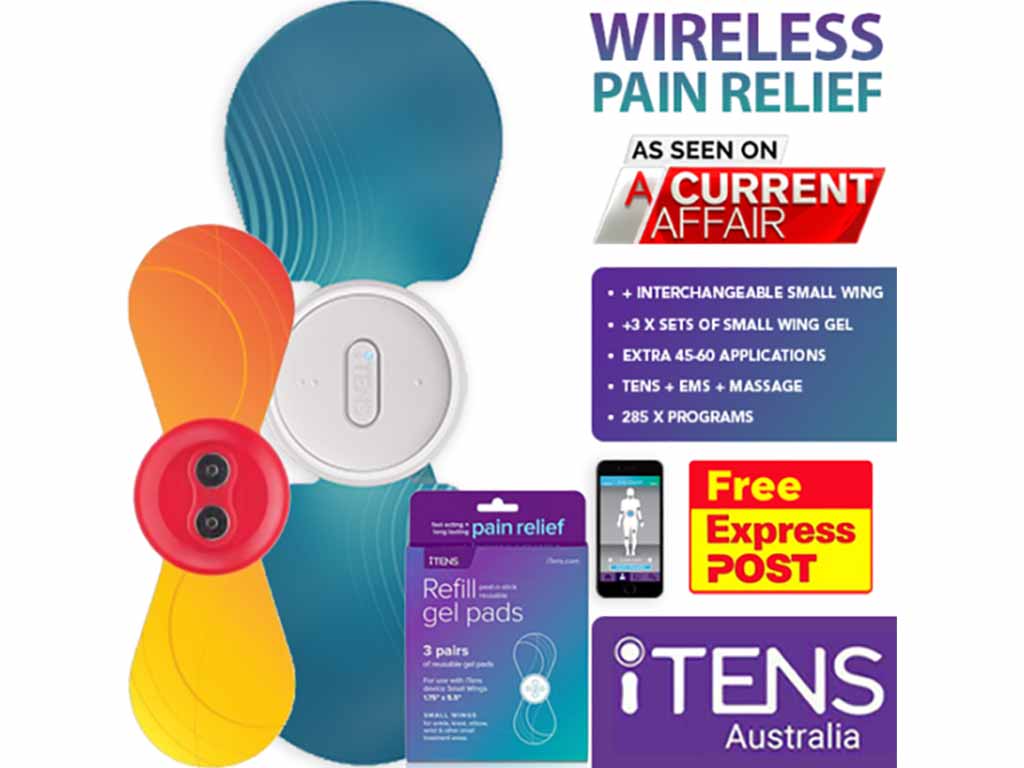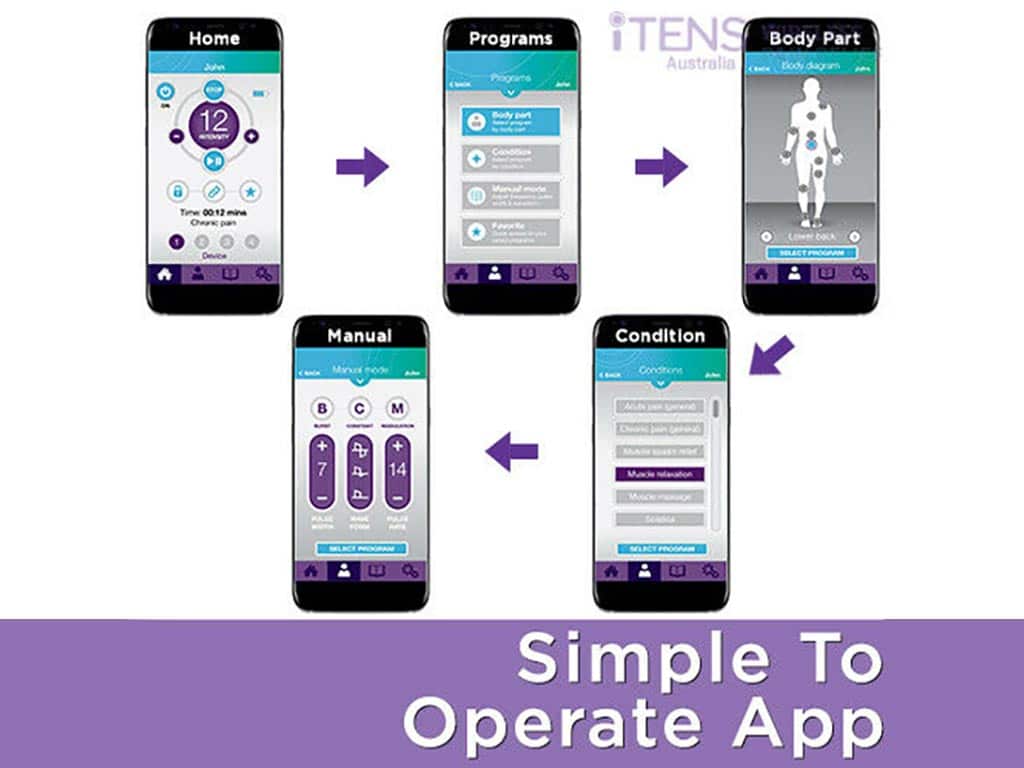
Transcutaneous Electrical Nerve Stimulation TENS unit is an effective treatment that can significantly enhance the quality of life of an individual. It is an electronic device that employs electrical currents as a method of pain relief. Accordingly, this electrical stimulation works in various analgesic mechanisms. It includes the pain gate mechanism and the Endorphin Release Theory. Furthermore, TENS provides benefits. It is non-invasive, drug-free, versatile, customisable, cost-effective, and easy to use.
Living with various types of pain can be debilitating. It makes everyday tasks difficult, affecting the overall quality of life. Standard pain management methods may be ineffective or have unwanted side effects. As a result, many individuals turn to alternative effective therapies, such as TENS treatment. Physical therapists and pain clinics often recommend TENS therapy to patients. This article will present how the TENS electrical device works, its benefits, and how to use it.
How a Transcutaneous Electrical Nerve Stimulation TENS Unit Works
Generally, a Transcutaneous Electrical Nerve Stimulation TENS unit works by delivering electrical pulses to the body. It streams the electric currents via electrode patches placed on the skin. Accordingly, this stimulation for pain relief works in various ways. Foremost, TENS therapy promotes the release of endorphins. These are the natural painkillers of the body, promoting feelings of well-being.
Another principle behind the TENS device is the Gate Control Theory of Pain. It suggests that there is a neurological “gate” in the spinal cord that controls the transmission of pain signals to the brain. The electrical impulses can effectively “close” this gate by activating non-painful fibres that intercept the pain signals. Hence, when the gate is closed, it inhibits the transmission of pain messages.
Furthermore, TENS machines can be set to deliver either low-frequency or high-frequency electrical pulses. Low-frequency or acupuncture-like TENS (below 10 Hz) is believed to trigger the release of endorphins. On the other hand, high-frequency or conventional TENS (above 50 Hz) is primarily associated with the pain gate mechanism.
History of TENS
- As early as 63 AD, a Roman physician observed that electrical fish could alleviate discomfort.
- In the 16th Century, scientists further explored the therapeutic potential of electricity.
- The modern TENS unit started taking shape in the 1960s. It is when researchers began experimenting with skin surface electrical stimulation.
- TENS devices became commercially available in the 1970s.
- Throughout the 1980s and 1990s, the clinical use of TENS expanded significantly. Medical professionals began incorporating TENS therapy into a variety of treatment plans.
- Over the years, TENS devices have been widely recognised and used worldwide. The technology has diversified, offering a complete range of simple and sophisticated models.

Benefits of Using a Transcutaneous Electrical Nerve Stimulation TENS Unit
One of the primary benefits of using a Transcutaneous Electrical Nerve Stimulation TENS unit is its non-invasive nature. TENS therapy does not require breaking the skin or entering the internal structures of the body. Additionally, TENS therapy provides a drug-free alternative. It is particularly advantageous for individuals looking to avoid the side effects and potential dependency associated with long-term use of medication.
Moreover, TENS treatment is highly versatile. It is capable of treating various types of pain. Its adaptability makes it an invaluable tool in clinical and home settings. Customisability is another significant advantage of TENS therapy. Users can adjust the pulse frequencies, intensities, and pulse durations according to their specific needs and comfort levels. It ensures the most influential parameters.
TENS devices are also a practical investment. Once purchased, the unit can be used multiple times. It offers long-term solutions without the recurring costs of medication or therapy sessions. Furthermore, TENS treatment can serve as a complementary therapy. It enhances the effectiveness of other pain management strategies. It can be used alongside physical therapy and massage.
Treatable Conditions
TENS offers significant relief to persistent chronic pain conditions. It may include fibromyalgia, backaches, and arthritis pain. Additionally, TENS serves as an immediate pain relief method for sudden acute pain conditions. It often arises from postoperative pain, labour pain, and injuries.
TENS is also beneficial for managing neuropathic pain stemming from nerve damage. It may involve phantom pain, diabetic neuropathy, and sciatica. Furthermore, TENS provides relief to musculoskeletal pain. It affects the muscles, bones, ligaments, and tendons. It may include joint pain and rheumatoid arthritis. The therapy can also address muscle pain. It often arises from spasms and tension.

How to Use a Transcutaneous Electrical Nerve Stimulation TENS Unit
Using a Transcutaneous Electrical Nerve Stimulation TENS unit is straightforward. Foremost, ensure the device is fully charged or has fresh batteries. Next, prepare the skin where to place the electrode pads. Peel the electrodes from their backing and apply them to the skin accordingly. Follow the proper electrode placement for effective positioning. Then, connect the electrodes via lead cables or to a smartphone for wireless.
Once the electrodes are in place, turn on the TENS unit. Modify the settings (frequency, intensity, and duration) or select a pre-set program (for advanced models). Start with the lowest setting and gradually increase the intensity until a solid but comfortable tingling sensation occurs. The sensation should be noticeable but not painful. Users may take some experimentation to find the optimal settings.
Use the TENS device for the recommended duration. It is usually between 15 to 30 minutes. Avoid overuse, as this can lead to skin irritation. Once the therapy session is complete, turn off the TENS unit before removing the electrode patches from the skin. After use, gently clean the skin and the electrodes. Store the device and accessories properly to ensure their longevity.
Proper Pad Placement
Start by locating the specific area of the body experiencing discomfort. Then, clean and dry the skin over it to ensure good adhesion and conductivity. Position the electrode pads accordingly. Positioning the pads on either side of the pain area can be effective for generalised relief or muscle relaxation. Professionals advise placing the pads along the nerve pathways when addressing specific nerve-related pain.
Additionally, it is vital to avoid placing the electrodes on some body regions. It includes the head, eyes, mouth, throat, chest, bony prominences, and broken skin. Nevertheless, the effectiveness of TENS therapy largely depends on experimenting with different placements.
Conclusion
In conclusion, a Transcutaneous Electrical Nerve Stimulation TENS unit is beneficial for improving the quality of life. The history of TENS began as early as 63 AD and has been widely recognised throughout the years. Nevertheless, the device works by sending electrical currents to the body via electrodes attached to the skin. It alleviates discomfort by blocking the transmission of pain signals and stimulating the release of endorphins. Additionally, it delivers the currents at either low or high frequencies.
Furthermore, TENS therapy presents various benefits. It is non-invasive, drug-free, customisable, a practical investment, and can serve as an adjunctive treatment. As a versatile tool, TENS treatment can treat numerous conditions. It can manage postoperative pain, sciatica, arthritis pain, rheumatoid arthritis, and muscle spasms. Moreover, it is easy to use the TENS unit. One must attach the electrodes, turn the device on, and adjust the settings. However, knowing the proper electrode placement is crucial.




















